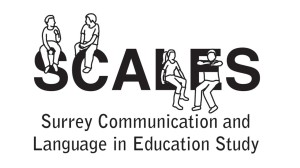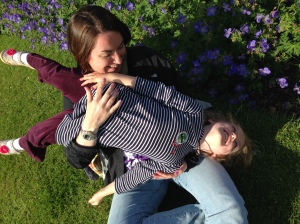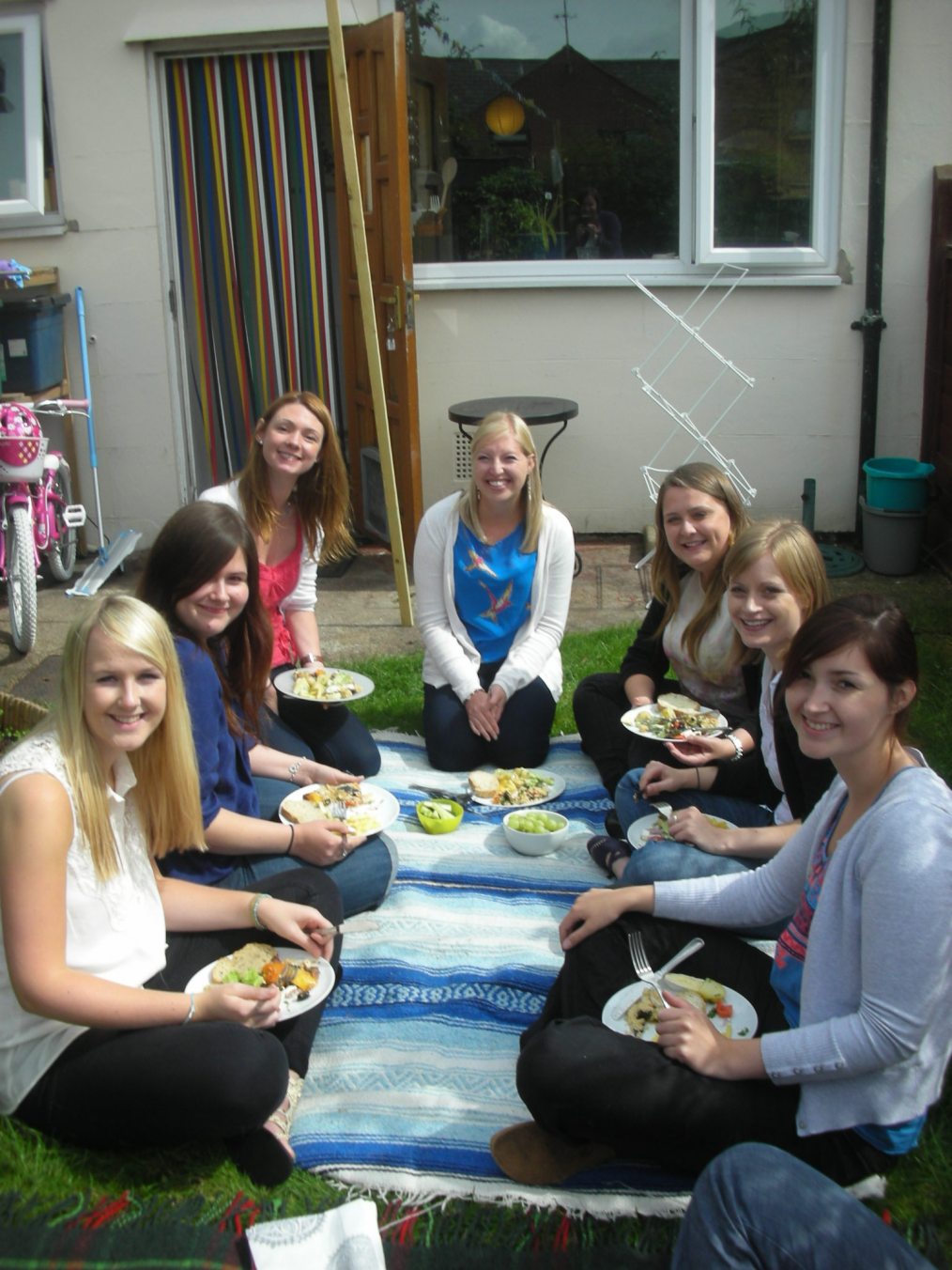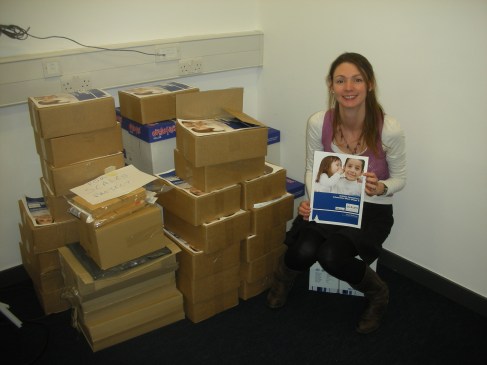How many children start school with a language disorder?
Six years ago now I got a generous grant from the Wellcome Trust to start the SCALES project. I have been guided and supported by a dream team of collaborators: Gillian Baird, Tony Charman, Andrew Pickles and Emily Simonoff who have ensured I didn’t make too many stupid mistakes and from whom I’ve learned an enormous amount. I’ve also had the good fortune to work with very talented and extremely hard-working research staff and PhD students, especially Dr Debbie Gooch, who is a master of organisation and a whiz at Stata!
Today sees the publication of the first major paper from the in-depth assessment of children participating in SCALES. I hope that it is a paper that will have lasting impact. I hope it will raise awareness of language disorder and the consequences of poor language development for classroom success. I hope it will encourage those shaping education policy to realise the value of focusing on oral language development in the early years curriculum. And I hope it will challenge the speech-language therapy profession to rethink systems of prioritisation to provide an equitable service to all children with language learning needs.
So what did do and why did we do it?
One of the main goals was to figure out how many children in England start school with a language impairment (this is called prevalence), and demonstrate how that impacts their school lives. This sounds fairly straightforward but it isn’t! Language is multi-faceted: we measured vocabulary, grammar and narrative skills across two modalities, speaking and understanding. This is the combination of tests that has informed current diagnostic criteria for language disorder in the diagnostic manual most commonly used in North America (the DSM5).
The next question is ‘how low should we go?’ Different studies have used different cut-offs for language impairment – our paper shows that this can drastically affect prevalence estimates. Our study used a more severe cut-off than has been used previously of -1.5SD below (~7th centile) the population average on 2/5 language tests.
The other criteria we looked at was non-verbal ability. For many, many years researchers and clinicians have focused on ‘specific’ language impairment: language deficits that occur in the context of otherwise normal development. Thus children are diagnosed when language is poor but non-verbal IQ scores are within the normal range, and no other developmental conditions (such as autism or Down syndrome) are present.
However, in recent years we have learned so much more about the developing brain and genetic influences that affect language development and these lines of evidence really make us question the validity of a ‘specific’ language impairment. So much so that DSM5 removed NVIQ requirements. So we included in our language disorder group children with non-verbal IQ scores between 70 and 85, as well as those with non-verbal IQ scores within the ‘normal’ range.
Finally, we wanted to demonstrate the functional impact of language disorder. To do this, we took advantage of the fact that all children in England are assessed on the Early Years Foundation Stage Profile at the end of their first year in school. To achieve a ‘good level of development’ children must meet or exceed 12 key curriculum targets, which cover speaking, listening, reading, writing, numeracy, physical and social development.
So what did we find out?
- A shocking 1% of children were reported by teachers to have “no phrase speech” at the end of their reception year!
- 4.8% had language impairment and non-verbal abilities within the normal range
- 2.78% had language impairment and non-verbal IQ in the 70-85 bracket. So including them increases the prevalence estimate by ~50% to an overall estimate of 7.58% of children starting school with a (currently) unexplained language disorder. That’s two children in every Year 1 classroom!!
- An additional 2.34% met the same criteria for language disorder, but in the context of intellectual disability and/or a known medical condition (such as autism).
- Children meeting criteria were very unlikely to meet education targets on the Early Years Foundation Stage Profile – only 11% of them did so.
- Having non-verbal IQ scores in the 70-85 bracket did not yield a wildly different clinical profile. Compared to children with non-verbal IQ within the normal range, these children did not have more severe language impairments, they did not have a qualitatively different pattern of language impairment, they did not have more pervasive behaviour problems and they didn’t even have worse outcomes on the EYFSP.
- Fewer than half of the children who met criteria for language disorder had been referred to speech-language therapy services.
What did we conclude?
I think our findings emphasize the importance of oral language for children starting school. Many teachers have said to me that in order to focus on it, oral language needs to have the same status and protected teaching time that literacy and numeracy do. Of course there will still be some children who require specialist support, and our findings clearly indicate this support should not depend on non-verbal IQ.
The reason we highlight this is because non-verbal IQ is the most common criterion used to exclude children from specialist clinical services, like language units or speech-language therapy. To me this doesn’t make much sense – these children still have language learning needs! Some people have suggested to me that children with lower non-verbal IQ may not respond to intervention in the same way. We don’t really have the evidence to support that claim, in part because these children are often excluded from intervention trials. But even if that were the case, that shouldn’t mean no service, it just means we need to establish what the most appropriate interventions are for children with multiple developmental challenges.
And just so you know, to get to this publication we:
- Distributed more than 10,000 information sheets and consent forms
- Screened over 7,200 children who started a reception class in Surrey in 2011
- Visited 195 schools all over Surrey and some schools further afield, such as the Isle of Wight and Devon! We could not have done this study without their amazing support (and the cups of tea they provided) – thank you!!
- Assessed 600 children in Year 1 and 94% of them again in Year 3
- Our testing team has spent over 2624 hours assessing the children – and probably at least that long again driving to schools – Surrey is a huge county!
- Parents and teachers have completed and returned ~4000 questionnaires – our response rate from teachers in Year 3 was 70% – amazing!
- And: I moved house, I moved to a new job, Debbie had two babies (!), one PhD student graduated and two more are due to finish this year.
So I think I’ll take a few hours off now before I get back to writing more SCALES papers…
The paper is Open Access and can be freely downloaded from this site:
http://onlinelibrary.wiley.com/doi/10.1111/jcpp.12573/abstract









